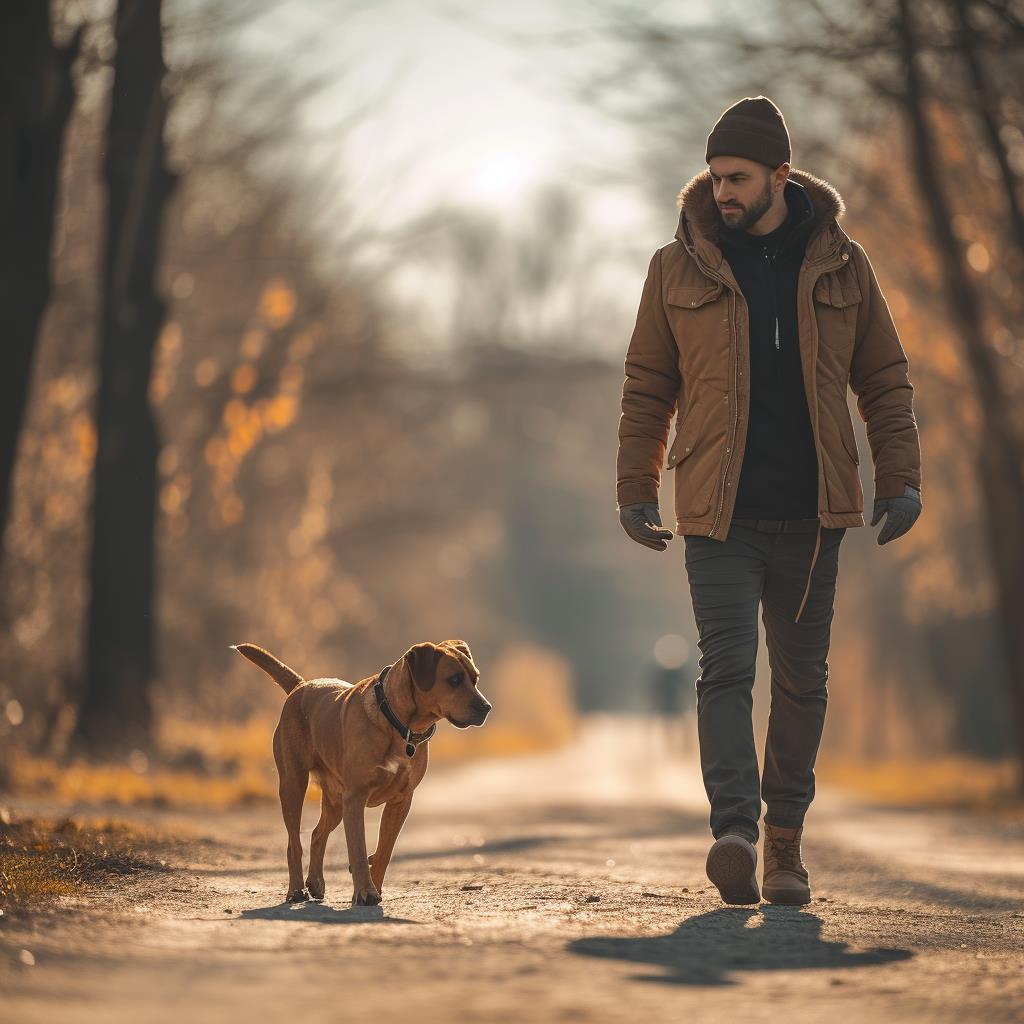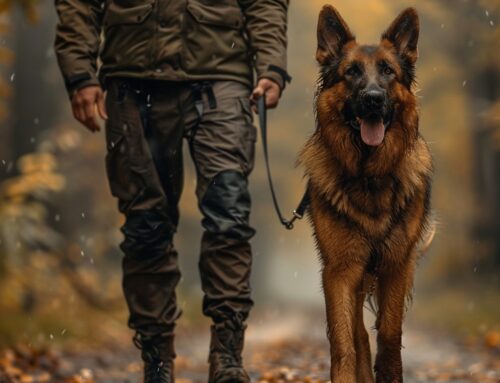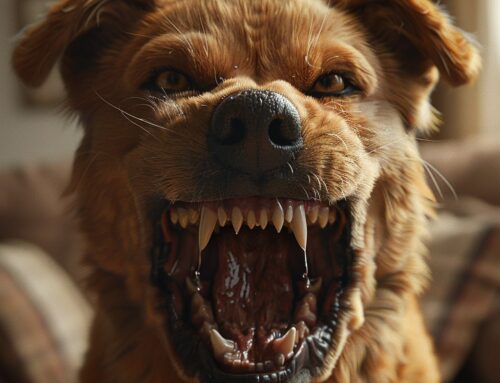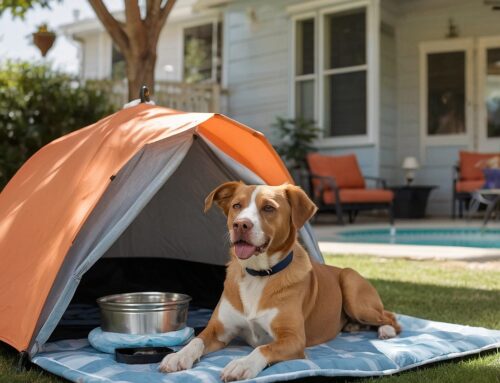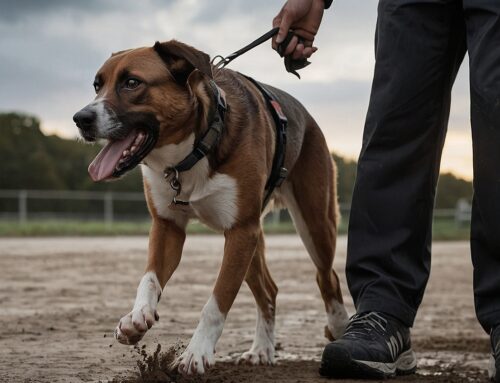Embarking on a leisurely walk with your furry family member should be a delightful experience for all. Yet, if your beloved dog tends to get overly excited or reactive on a leash, it can transform a peaceful stroll into an unexpected adventure. Leash reactivity is a common challenge among dogs, but fear not! With the right approach and steadfast training, you can turn these walks into joyful bonding moments. We’ll equip you with practical tips and strategies like seeking the right professional help to ensure your walks become cherished moments of connection and happiness for the whole family.
Understanding Your Dog’s Leash Reactivity
Leash reactivity in dogs refers to dog reactivity to stimuli while on a leash, often manifested by dog body language like barking, lunging, or pulling. Common triggers include other dogs, people, bicycles, and even inanimate objects. This behavior can stem from fear, anxiety, frustration, or a desire to establish dominance. Before addressing leash reactivity, it’s crucial to understand its root causes, as this knowledge will inform your training approach.
Teach and Reinforce Basic Commands
Teaching and reinforcing basic commands is a fundamental aspect of leash reactivity training, contributing significantly to a well-behaved and responsive canine companion. By incorporating the following strategies, you can enhance your dog’s obedience and, subsequently, minimize leash reactivity.
Consistent Training Sessions
Consistency is key to successful dog training. Establish a routine of regular training sessions in a quiet, distraction-free environment. This controlled setting allows your dog to focus on learning commands without the interference of external stimuli. Choose a time when your dog is alert and receptive to training, reinforcing positive behaviors such as “sit,” “stay,” and “leave it.”
- Establish a Training Schedule: Set aside specific times each day for training. Consistency in training sessions helps reinforce commands and build a strong foundation for behavior modification.
- Gradual Progression: Begin with simple commands and gradually increase the complexity as your dog becomes more adept at following instructions. This incremental approach ensures steady progress in their training.
- Incorporate Fun: Make training sessions enjoyable by including interactive elements, such as using toys or treats. Positive experiences during training create a positive association with learning and obeying commands.
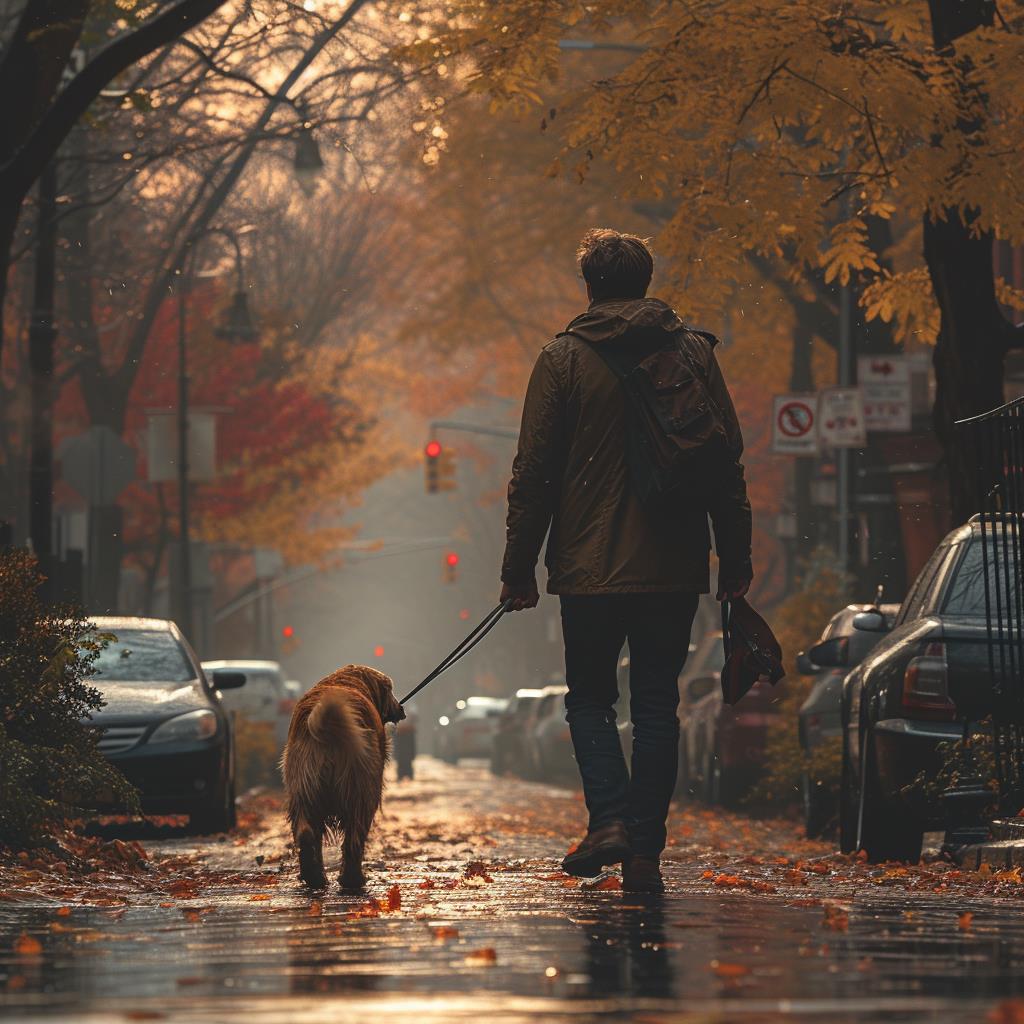
Use Commands During Walks
The true test of obedience comes during walks when your dog encounters potential triggers. Incorporate the basic commands, such as “sit,” “stay,” and “leave it,” to guide your dog’s behavior and divert their attention away from reactive responses.
- Anticipate Triggers: Identify potential triggers in your walking environment, such as other dogs, people, or enticing scents. Be proactive in using commands to guide your dog’s behavior before they react.
- Practice in Controlled Environments: Initially, practice commands in a controlled environment during walks, gradually introducing distractions. This method helps your dog generalize their training to real-world situations.
- Redirect Attention: Use commands strategically to redirect your dog’s attention from triggers. For instance, if your dog starts to fixate on another dog, prompt them to “look at you” or “leave it,” rewarding compliance with positive reinforcement.
Reward Compliance
Positive reinforcement is a powerful tool in shaping your dog’s behavior. One of the most effective ways to correct leash reactivity is through positive reinforcement training. This method focuses on rewarding desired behaviors rather than punishing undesirable ones. When your dog exhibits calm behavior on a leash, reward them with treats, praise, or affection. This creates a positive association between staying calm and receiving rewards. By rewarding compliance with treats, praise, or affection during walks, you strengthen the connection between following commands and positive outcomes.
- Use High-Value Rewards: Select treats or rewards that your dog finds especially appealing. Reserve these high-value rewards exclusively for reinforcing commands during walks, making the experience more rewarding.
- Timely Rewards: Deliver treats or praise immediately after your dog follows a command correctly. The timing of rewards is crucial in reinforcing the desired behavior and creating a positive association.
- Vary Rewards: Keep your dog engaged by varying the types of rewards. Sometimes offer treats, while other times provide verbal praise or affection. This variety keeps the positive reinforcement novel and exciting for your dog.
- Consistency Matters: Be consistent with your rewards to reinforce the positive behavior. Over time, your dog will learn that calm behavior results in positive outcomes.
Incorporating these detailed strategies into your training routine ensures a holistic approach to leash reactivity, creating a well-mannered and responsive companion during your family walks.
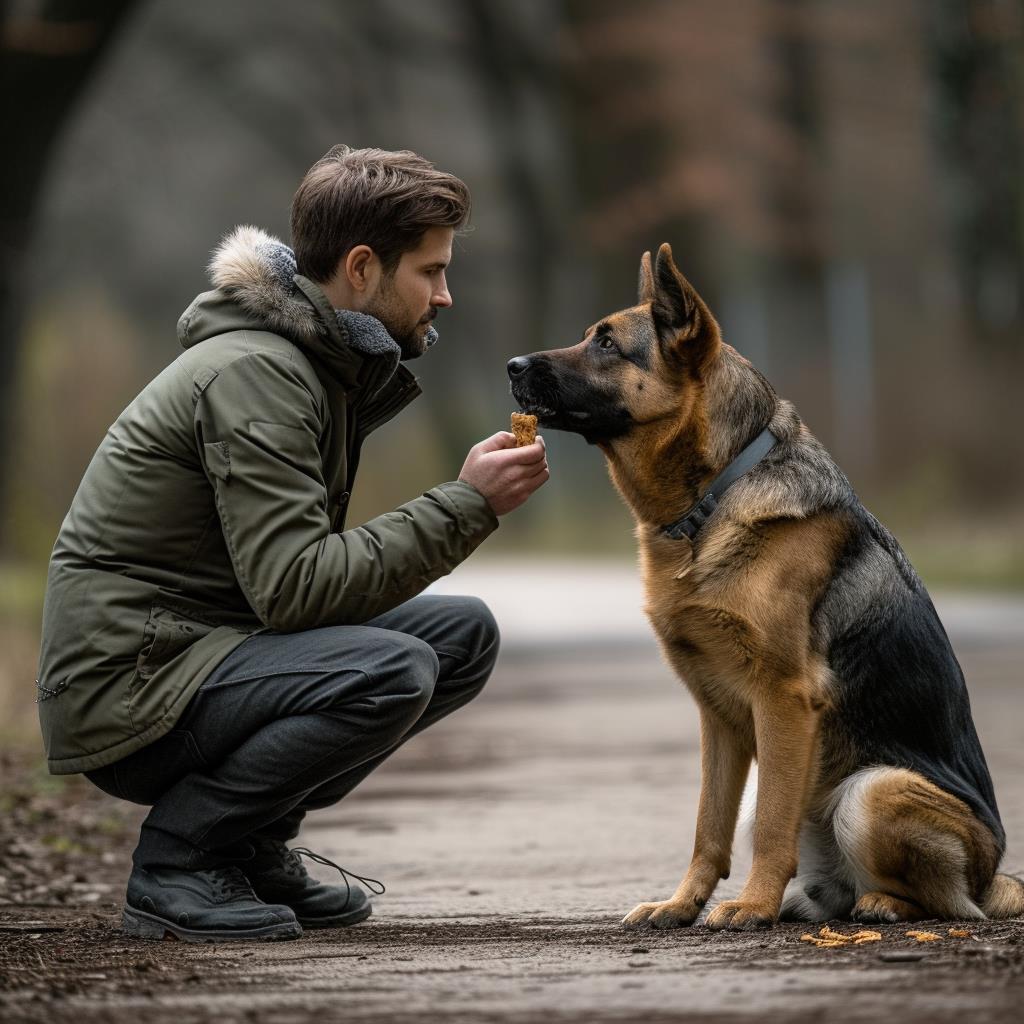
Desensitization and Counterconditioning a Leash Reactive Dog
Desensitization and counterconditioning are powerful techniques for addressing leash reactivity, requiring a thoughtful and gradual approach.
Identify Triggers
Understanding the specific stimuli that trigger your dog’s reactivity is crucial for effective desensitization and counterconditioning. It could be a puppy or an adult dog, people, specific sounds, or even particular environments. Take note of your dog’s reactions and identify the common denominators triggering canine behavior.
- Observation and Documentation: Keep a journal or record of your dog’s reactions during walks. Note the presence of other dogs, encounters with people, or any specific circumstances leading to heightened reactivity.
- Consult with a Professional: If identifying triggers proves challenging, seek the guidance of a professional dog trainer or behaviorist. They can conduct a thorough assessment and help pinpoint specific triggers.
Choose the Right Equipment
Selecting the right walking equipment is a crucial aspect of managing leash-reactive behavior. Each component, from the type of collar to the length of the leash, plays a role in providing control and ensuring both your safety and your dog’s comfort.
- Collar Choice: Choosing the right collar is crucial for managing leash-reactive behavior in dogs. Consider your dog’s size, behavior, and training requirements when selecting a collar, ensuring a proper fit and gradual introduction for comfort. Seeking guidance from a professional trainer is advised for optimal collar choice and effective leash management.
- Leash Length: Opt for a shorter leash to maintain close control of your dog. A longer leash may allow more room for reactive behavior. A longer leash may inadvertently provide more room for reactive behavior, compromising the effectiveness of leash training.
Gradual Exposure
Gradual exposure is a cornerstone of desensitization, allowing your dog to acclimate to triggers without overwhelming them. Start by exposing your dog to the trigger at a distance where they remain calm, and systematically reduce that distance over time.
- Set an Initial Distance: Begin with a distance that keeps your dog below their reactivity threshold. This distance allows them to observe the trigger without becoming anxious or reactive.
- Monitor Body Language: Pay close attention to your dog’s body language during exposure. Signs of stress or discomfort may include raised hackles, excessive panting, or a rigid posture. Adjust the distance accordingly.
- Gradually Decrease Distance: As your dog demonstrates calm behavior, slowly decrease the distance to the trigger. Progress at a pace that ensures your dog remains comfortable and composed.
Implementing these steps in desensitization and counterconditioning empowers you to address leash reactivity systematically and compassionately. With patience and a well-thought-out plan, you can help your dog overcome reactivity and transform walks into enjoyable experiences for both of you.
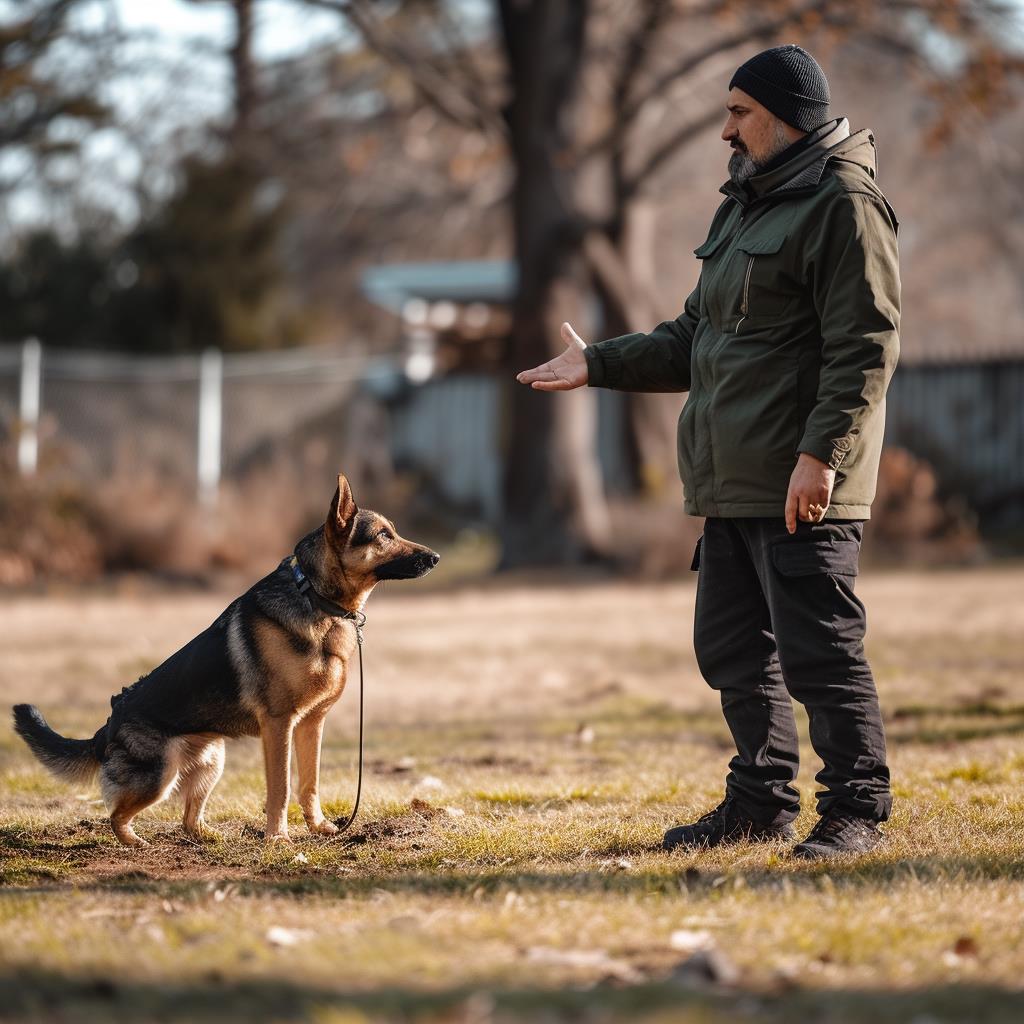
Practice Calm Walking
Practicing calm walking is a cornerstone of managing leash reactivity, creating a more controlled and enjoyable experience for both you and your furry companion.
Maintain a Steady Pace
Walking at a consistent and moderate pace contributes significantly to minimizing your dog’s arousal levels. Sudden speed changes can trigger excitement or anxiety, potentially exacerbating reactivity.
- Establish a Rhythm: Develop a rhythmic walking pace that your dog can easily follow. A steady pace promotes a sense of security and predictability, helping to keep your dog focused and less prone to reactive behavior.
- Monitor Your Body Language: Pay attention to your own body language during walks. Remaining calm and composed communicates a sense of assurance to your dog, reinforcing the expectation of a peaceful outing.
- Practice Loose-Leash Walking: Encourage loose-leash walking by consistently maintaining a steady pace. This not only reduces the likelihood of reactive behavior but also fosters a positive connection between a calm walking speed and a pleasant experience.
Use Shorter Leash
The length of the leash plays a crucial role in reinforcing the concept of walking calmly by your side. Opting for a shorter leash provides you with increased control and discourages pulling.
- Choose Appropriate Leash Length: Select a leash that allows you to maintain close proximity to your dog. A shorter leash minimizes the chances of them pulling ahead, reinforcing the expectation of walking together.
- Hold the Leash Firmly: Ensure a firm but comfortable grip on the leash. Holding it closer to your body enhances control and prevents your dog from forging ahead impulsively.
- Employ Gentle Corrections: If your dog starts to pull, use gentle corrections to guide them back to your side. Consistency in reinforcing the desired behavior helps your dog understand the expectations of a calm walk.
Stop and Wait
Incorporating strategic stops during your walk is an effective technique for managing reactive behavior. When your dog exhibits signs of reactivity, stopping and waiting for them to calm down reinforces the connection between composure and forward movement.
- Choose a Safe Spot: When stopping, select a safe and neutral spot away from potential triggers. This allows your dog to refocus without unnecessary distractions.
- Wait for Calm Behavior: Refrain from moving forward until your dog exhibits calm behavior. This teaches them that forward movement is contingent on maintaining composure.
- Reward Calmness: Once your dog has calmed down, reward them with praise, treats, or a gentle pat. Positive reinforcement strengthens the association between calm behavior and positive outcomes.
Incorporating these detailed strategies into your practice of calm walking enhances your ability to manage leash reactivity effectively. By maintaining a steady pace, using a shorter leash, and employing strategic stops, you create a structured and positive walking experience that promotes a calm and focused demeanor in your furry friend.
Seek Professional Help
When dealing with persistent leash reactivity, seeking professional help becomes a valuable and proactive step in addressing the issue. The expertise of a professional dog trainer or behaviorist can provide tailored insights and advanced techniques to manage and overcome leash reactivity effectively.
Professional Assessment
Enlisting the services of a trained professional offers a comprehensive understanding of your dog’s behavior. The assessment involves observing your dog in various contexts, identifying specific triggers, and analyzing their reactions. This thorough evaluation enables the professional to create a customized training plan tailored to address your dog’s unique needs.
Obedience Classes
Enrolling your dog in obedience classes offers a structured environment for refining their behavior and responsiveness to commands. These classes not only contribute to addressing leash reactivity but also enhance overall obedience and cooperation. It can start with basic behavior modification programs that will address common dog challenges like leash reactivity.
Behavior Modification Techniques
Professional behaviorists are equipped with advanced behavior modification techniques that go beyond basic training methods. These techniques are tailored to address specific issues such as leash reactivity more effectively. Performance K9 Training has an advanced behavior modification board and train program that will help your dog get to that next level in training.
Seeking professional help is a proactive step that demonstrates your commitment to addressing leash reactivity thoroughly. With their expertise, a professional can offer targeted assessments, structured training environments, and advanced behavior modification techniques, providing the best possible outcome for you and your dog.
Correcting Leash Reactivity On Walks
Correcting leash reactivity requires patience, consistency, and a deep understanding of your dog’s triggers and behavior. By implementing positive reinforcement, desensitization, and counterconditioning techniques, along with reinforcing basic commands and using the right equipment, you can transform your walks into enjoyable experiences for both you and your furry friend. Remember that every dog is unique, and progress may take time. With dedication and a positive mindset, you can overcome leash reactivity and build a stronger bond with your canine companion.
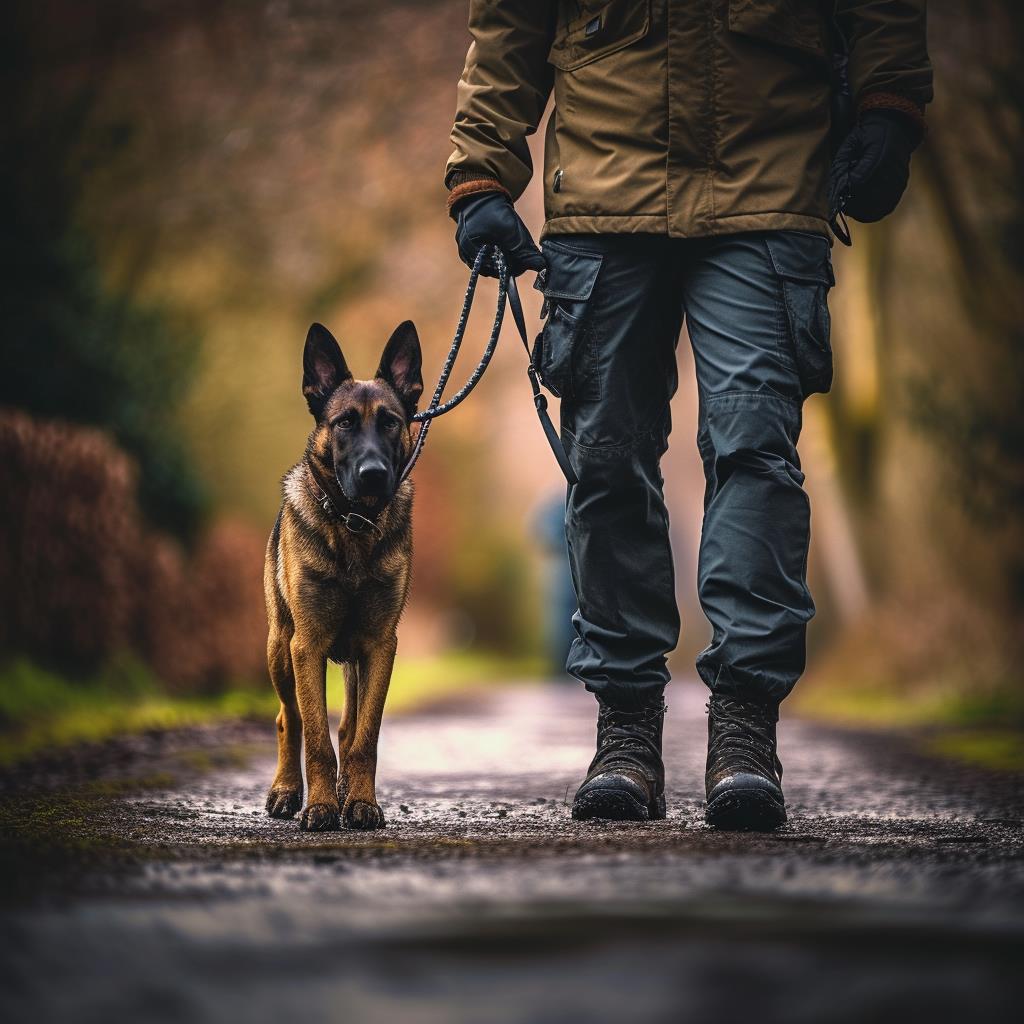
Streamline your canine companions leash training journey with Performance K9 Training, offering a 2-week Basic Behavior Modification program and a more advanced 3-4 week Advanced Behavior Modification program. In both board and train programs, dogs receive expert guidance, leading to polished training outcomes. Choose the program that suits your needs, and witness your furry family member transform into a well-behaved companion and have the proper leash training. Our training environments ensure a happy and safe learning space for your dog. Contact us today to enroll your dog in our programs and elevate their behavior to bring joy and harmony to your family. Performance K9 Training offers on-site complimentary 1-hour consultations where pet parents can bring their dog for an assessment with our founder, David Greene, speak with us today!



